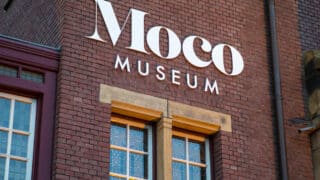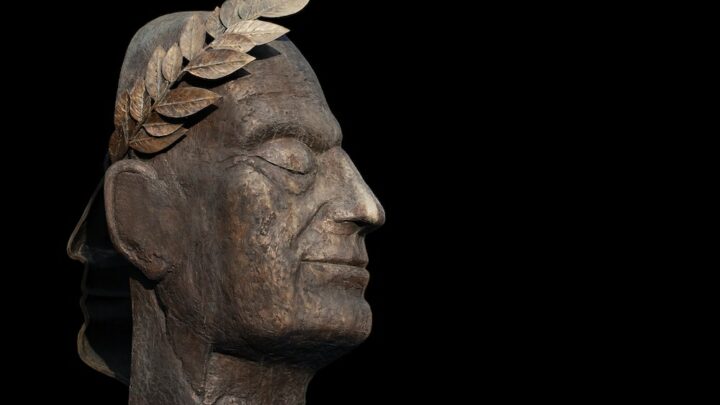
A humungous history tour of London where all you’ll need is a healthy curiosity and a good pair of shoes.
Lace up your boots, history buffs. We’re about to take you on a walk of London’s long and winding history. Today you’ll see slices of London dating right back to the city’s true inception under the Romans, hear tales of grizzly deaths in the Middle Ages, adventure and vice.
Best of all, it’s totally free and self-guided. You can pick your own pace and be your own tour guide.
We’ve included information about the spots you’re visiting to fill out a picture of London throughout the ages. There are a few spots you might want to nip into along the way, The Tower of London and The Golden Hinde, or perhaps the art gallery and hidden Roman amphitheatre at the Guildhall but at the end of the day, you’re the boss.
You can stop along the way for food or a break as you like, you’ll have plenty of options. If you’re walking during the week, Leadenhall Market has loads to offer. Otherwise you could hold on to near the end of the tour and hit Borough Market where you’ll find things open at the weekend too.
But enough talk! Let’s get to it…
Practical Information about the Historical Walking Tour of London
Starts
London’s Roman Wall, Barbican
Finishes
Shakespeare’s Globe, The Southbank
Distance
8km or just under 5 miles.
Time
About two hours of walking, plus time for any of the attractions you want to see and maybe a break for lunch. We’d plan for around 4-5 hours but it can be done faster if you want.
Difficulty of Tour
Easy to middling. There’s a lot of walking and some stairs but on the whole no rough terrain or major obstacles.
Admission Fees
- The Tower of London: £33.60
- The Golden Hinde: £6.00
Places Visited on the Tour
- London’s Roman Wall
- The Guildhall
- Monument
- Leadenhall Market
- All Hallows by the Tower
- The Tower of London
- Tower Bridge
- The Golden Hinde
- Winchester Palace
- Shakespeare’s Globe
Accessibility
The tour is very accessible, you won’t be required to climb any madly steep hills or navigate any rough terrain, though it does require a lot of walking.
If that’s not your cup of tea then feel free to pick the route up anywhere you like. Cutting out the section between Tower Bridge and The Golden Hinde will save you a lot of walking.
If you need breaks you’ll be able to find plenty of places for food and drinks along the way as the tour snakes through central London which is full of pubs, cafes and restaurants.
Stops on the History Tour of London
Stop One – London’s Roman Wall
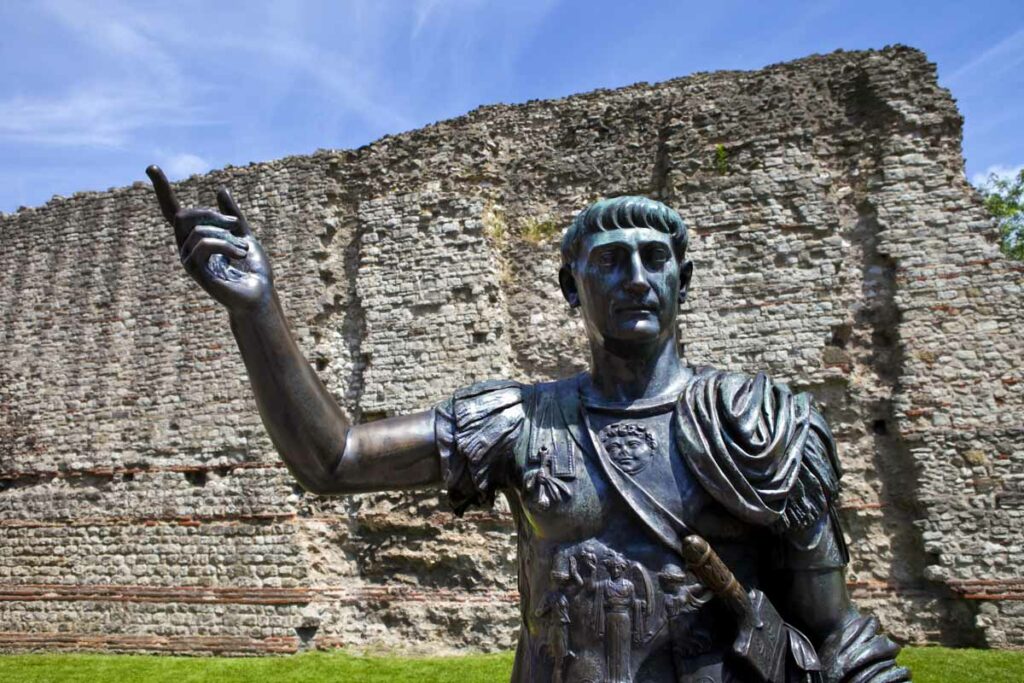
We’ll start our tour where the history of London really begins in earnest: with the Romans. London owes much to these conquerors from the Italian peninsula, not least its name. The word London comes from the Latin Londinium, which is what the Romans would have called this city when they came here around 2000 years ago.
Oh and by the way, when they came here they built the place. Much of what is old and important about The City of London (AKA The Square Mile) was laid out in the Roman era, including the wall you’re looking at.
The walls they built still quite accurately mark where the City of London ends and the rest of London begins. They also picked the location for London Bridge and a very important civic centre we’re visiting next.
→→ →→ 7 minute walk from the Roman Wall to the Guildhall.
Walk west on St Alphage Garden towards Wood St. Turn left onto Wood St. Turn left after about 50 metres. Turn right towards Basinghall St and take the stairs after, about 50m turn left towards Basinghall St.
Stop Two – The Guildhall
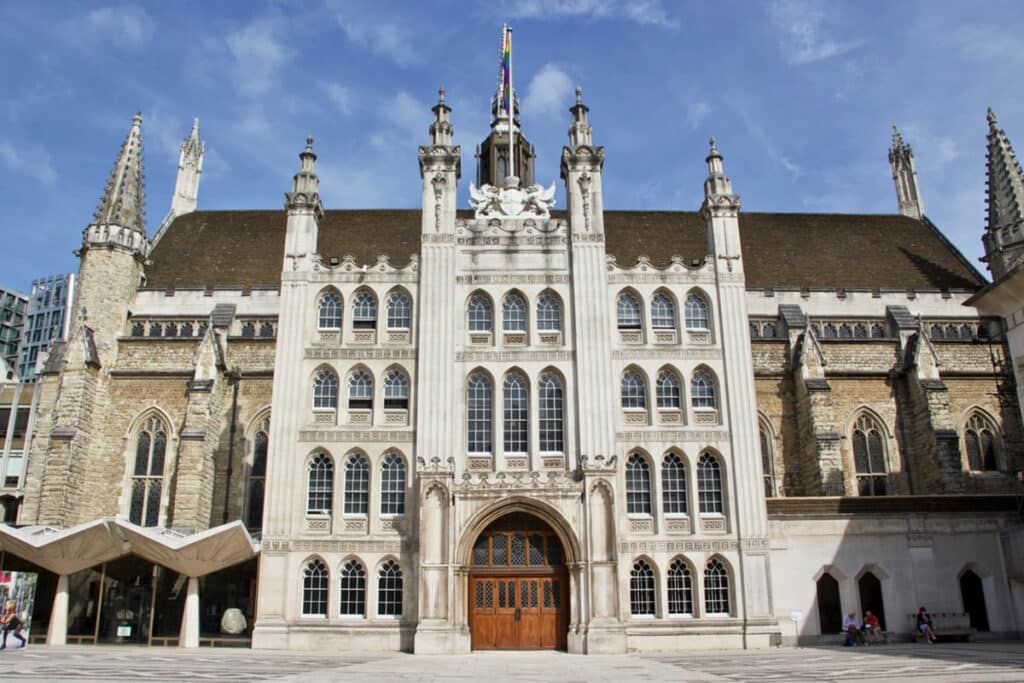
This impressive building is The Guildhall. It’s the administrative centre of The City of London (not to be confused with Greater London) and the home of The City of London Corporation, stewards of the oldest continuous democracy in the world.
The site was passed down through the many generations of London’s rulers. It began life as an amphitheatre in the Roman Era, was first used as an administrative site by the Saxons and has continued in that function for over a thousand years.
The Great Hall dates back to 1440 and is truly stunning, and the original Roman amphitheatre’s foundations can be seen in the basement. Other than visiting the latter and the stunning collection of art at the Guildhall Art Gallery, you can’t just enter and wander about. You can book yourself on a tour though. Read all about that in the guide below…
Read More: The History of The Guildhall: The HQ of the World’s Oldest Democracy
→→ →→ 12 minute walk from Guildhall to Monument
Walk south on Basinghall St towards Masons Ave. Turn left onto Gresham St and continue onto Lothbury. Turn right onto Princes Stand then left onto Threadneedle St and continue onto King William St and follow it to Monument St.
Stop Three – Monument
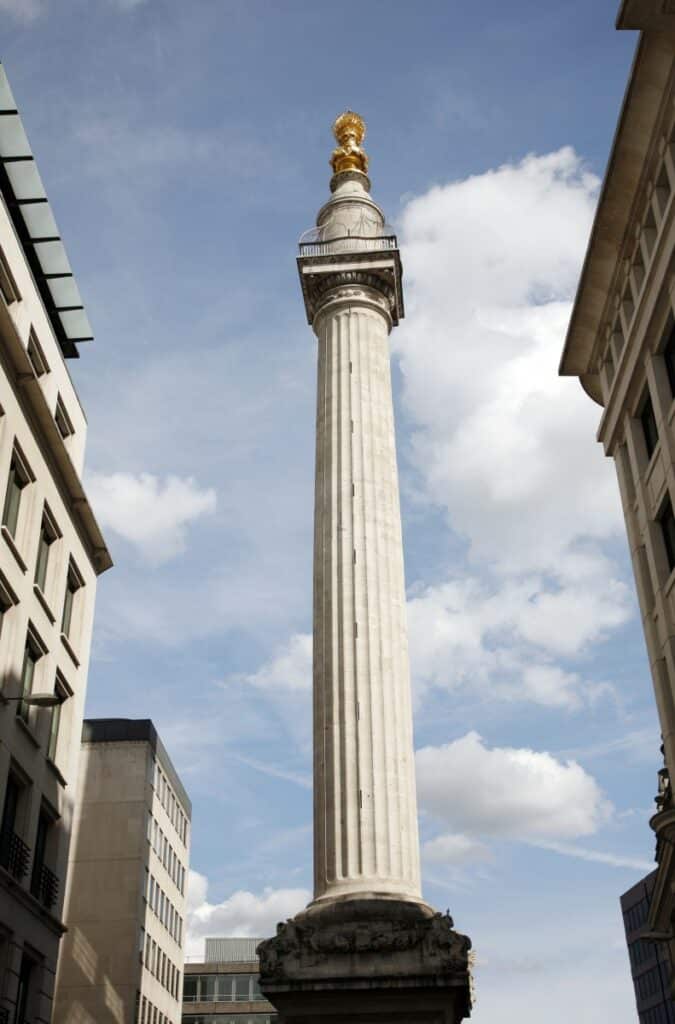
Now you’re at Monument. This needle commemorates the history of the Great Fire of London. You might expect it to be a dour reminder of the people who lost their lives, and in some way it does remember them – but in truth, most people got away from the flames and in total only six people died.
Monument is mostly about the devastation it wreaked upon those that survived, large portions of London being burnt to the ground. It’s also a hopeful reminder of the ability to rebuild and get back on your feet.
Great architect of his day, Sir Christopher Wren, designed the needle. It was completed in 1667. It stands 202 feet away from the place where the fire began on Pudding Lane.
→→ →→ 6 minute walk from Monument to Leadenhall Market
Walk north on Fish St Hill towards Eastcheap, take the zebra crossing and continue onto Gracechurch St. Follow it until you see Bull’s Head Passage about 70m on your right. Take the passage and turn left onto Lime St Passage. Leadenhall Market will be in front of you.
Stop Four – Leadenhall Market
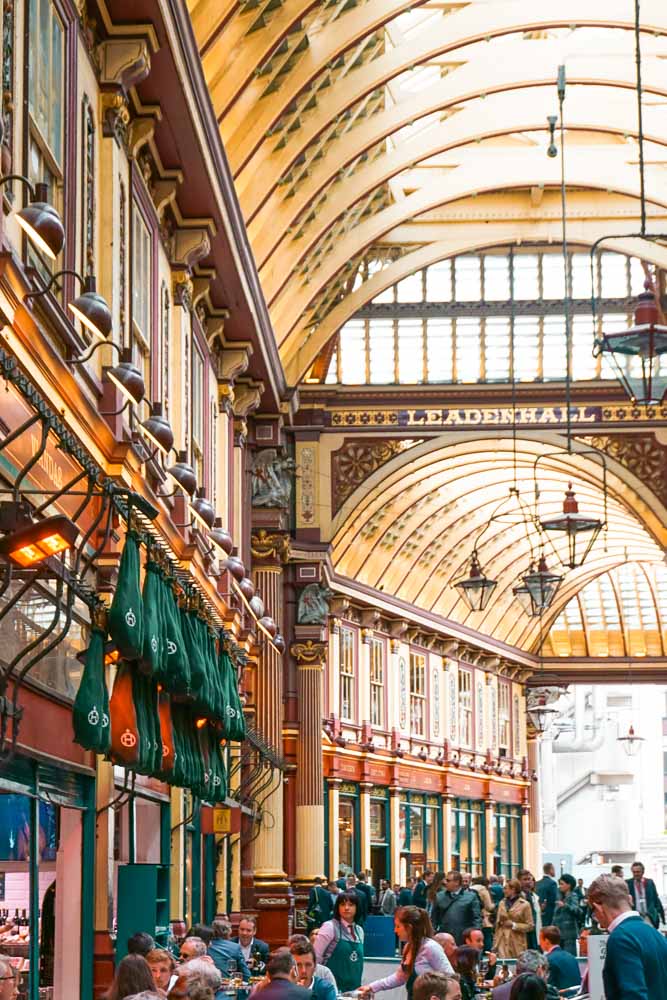
Leadenhall Market gives us another opportunity to bring up the Romans. Yes, more of those guys (just in case you didn’t believe us about how much of an impact they made on London).
They first set up a bazaar here two millennia ago. That tradition has lived on to the present day, though the way it looks (and the things on sale) will have changed a lot. The market as we now know it was officially established in 1321.
Legendary mayor Dick Whittington gets his name into these annals of history in 1402 by purchasing the market for the City of London Corporation (the folks who run the City of London from the Guildhall) making it into even more of a hub of commerce.
The current style dates to the Victorian era and was designed by Horace Jones. In more recent history it was used as the exterior shot for Diagon Alley in the Harry Potter films.
While you’re here, this might be a good spot for a bit of lunch or a break. You’ll have heaps of spots to choose from, take your pick. Our fav would be Old Tom’s Bar but, like many of these Leadenhall Market eateries, it’s only open Monday – Friday.
→→ →→ 9 minute walk to All Hallows by the Tower
Walk back the way you came but don’t Bull’s Head Passage, follow the road about 60m to Fenchurch St. Walk the same distance again and turn right onto Rood Ln. Turn left onto Eastcheap and continue onto Great Tower St 436.
Stop Five – All Hallows by the Tower
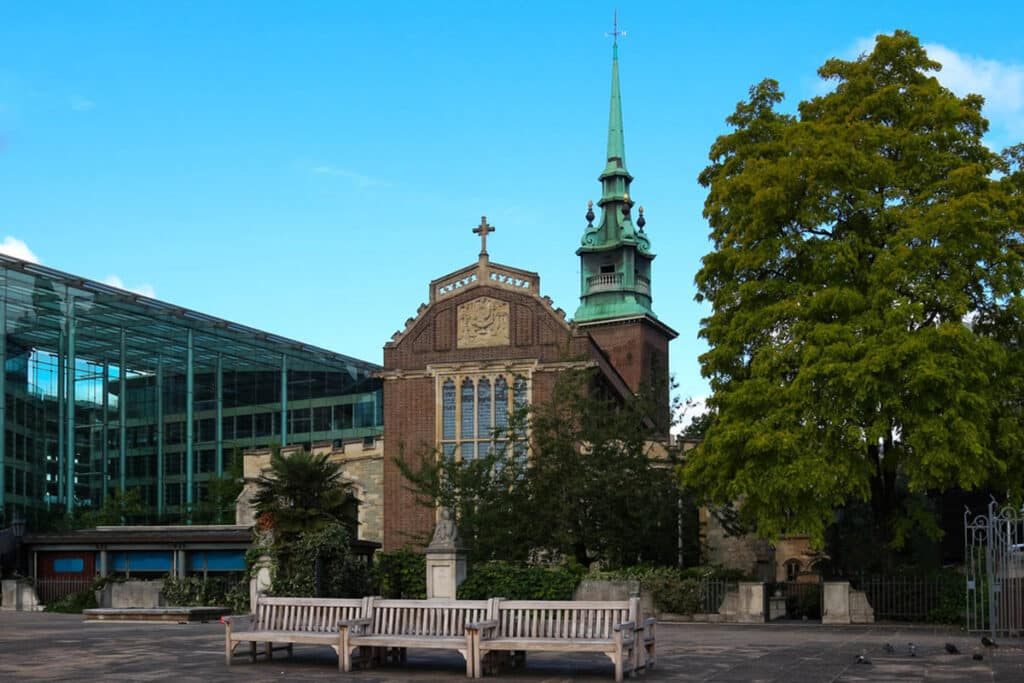
The City of London is a place of many churches. Some of them are truly ancient, or at least have ancient roots. All Hallows by the Tower is so old that no one really knows its origins.
The first record of it comes from a mysterious listing in the Doomsday Book (written in 1086) to the property of Barking Abbey being ‘28 houses and half a church’. That half a church is said to be All Hallows.
The church survived the Great Fire of London, and its connection to this and one of our favourite London characters, Samuel Pepys, is why we love it so much. Pepys writes in his diaries – a must-read for any London history fan – that he watched the fire raging through his beloved city from All Hallows’ spire. Here are his words:
“I up to the top of Barking steeple, and there saw the saddest sight of desolation that I ever saw; every where great fires, oyle-cellars, and brimstone, and other things burning… … as far as I could see it”
→→ →→ 3 minute walk to The Tower of London
Follow Gloucester Ct to the end, turn right and then left. You can’t miss it.
Stop Six – The Tower of London
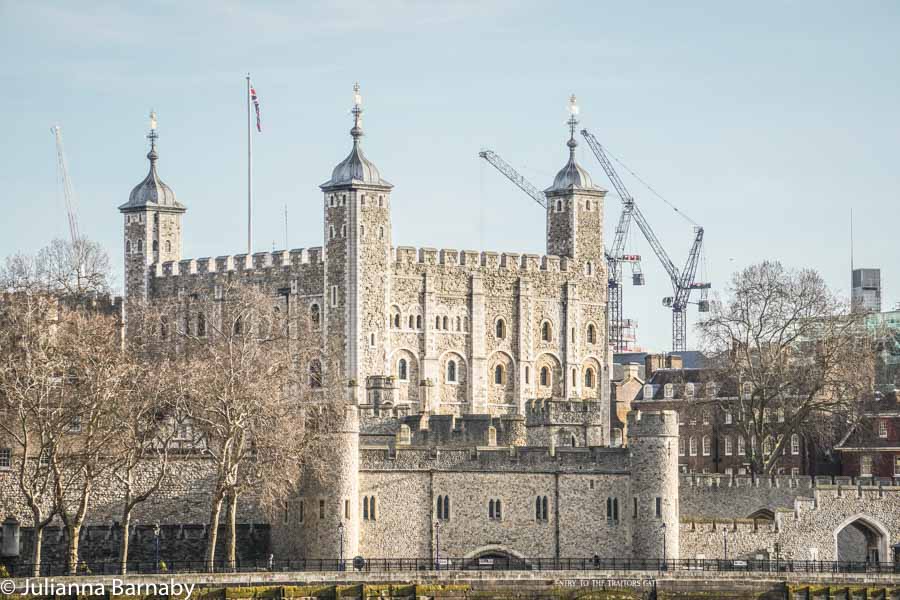
A London location that needs no introduction, The Tower of London has been the stage for many of the city, and the country’s great historical moments. It’s played prison to dissidents and rouges from Guy Fawkes to the Kray Twins.
Many have lost their lives in the execution chambers here but none are probably more iconic than Anne Boleyn, wife (or should we say ex-wife) of Henry VIII.
The site as a defensive position on the riverside dates back to the Normans. William the Conqueror built a stone tower here in the 1070s to secure his power over the city.
The tower you’re looking at is much more recent than that but is still home to some very long-standing traditions. The Ceremony of the Keys for one, is a key handover ritual that’s been performed every day for the past 700 years.
Because we know you’re wondering, the last person to be executed here was Josef Jakobs. The year was 1941 and he’d been found guilty of spying for Germany and executed by firing squad.
→→ →→ 5 minute walk from the tower of London to Tower Bridge. Follow the river east and take the stairs under the bridge to reach crossing level. Again, you can’t miss it.
Stop Seven – Tower Bridge
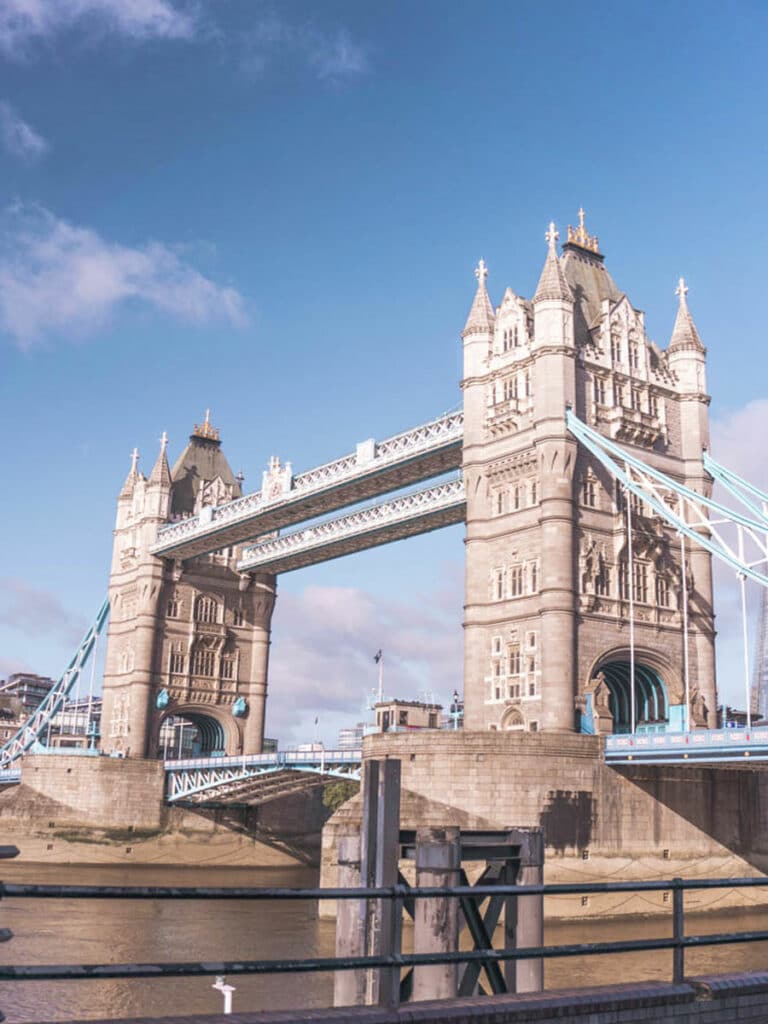
It’s now time to head to the south side of the river. We’re going to do that by crossing London’s most iconic bridge. Yep, it’s Tower Bridge.
Tower Bridge was finished in 1894 and was actually designed by a fella that’s come up in our tour already (no, he’s not a Roman this time) – it’s Horace Jones, the mind behind Leadenhall Market. Over 50 designs were submitted for the bridge but it was his that won out.
The bridge famously opens in the middle to allow boats to pass. The span of the bridge is 800 metres and the two towers that support it are 65 metres tall each.
By crossing the bridge you’re becoming one of the 40,000 crossings made on average every day.
→→ →→ 15 minute walk from Tower Bridge to The Golden Hinde
Follow the river west along Queen’s Walk. When it comes to an end take the stairs onto Tooley St and cross at the foot of London Bridge to take the stairs back down to the riverside. Follow Montague Cl to Cathedral St where you take a sharp right and follow Cathedral St 50m to The Golden Hinde.
Stop Eight – The Golden Hinde

Your walk along the riverfront should lead you past a pretty stunning galleon. That would be The Golden Hinde, or more accurately a replica of it.
The Golden Hinde was the ship that Sir Francis Drake made his circumnavigation of the globe in. His trip was one of the greatest (and most questionable adventures) in British history. It was essentially a state-sponsored pirate raid.
Drake’s mission was to steal as much Spanish gold as he could get his hands on and bring it back to England. He was so successful on the Pacific coast of South America he couldn’t return the way he came and was forced to circle the globe to get home.
His haul made him and Queen Elizabeth enormously rich. From one Spanish ship alone he took the equivalent of £480m in today’s money…
This boat was built from years of research on the plans and design of Drake’s ship. It was finished in the 70s, making its own circumnavigation of the globe from ‘74 – ‘79.
→→ →→ 1 minute walk to Winchester Palace.
You basically need to keep walking west about 30 seconds, no longer than a minute. You’ll see the ruins of Winchester Palace on your left.
Stop Nine – Winchester Palace
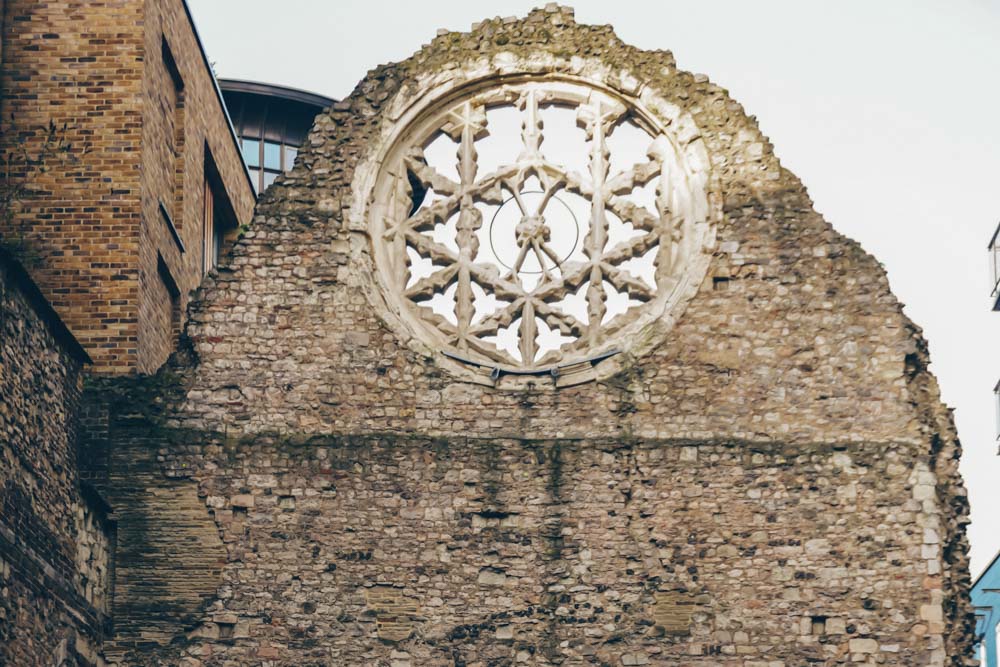
Still with us? You’ve put in quite a stretch today. We’re nearly at the end of our tour. The penultimate stop is Winchester Palace. The Palace is certainly not in its former glory. All you’ll be able to see here now is some ruins of what was once the grand home of The Bishop of Winchester.
It was built in the 12th century and the section that you can see standing survives from that time. It would have once been part of the Great Hall. The property itself would have encompassed around ten acres of land.
So what was the Bishop of Winchester up to in London? Back in the day, the bishops were often required to be in the capital on important business. Palaces like this would have been their city residences – looks like these guys weren’t fans of the vow of poverty…
These residencies would have been outside of the jurisdiction of London law, known as Liberties. The one you’re standing in now was known as the Liberty of the Clink and has a bit of a nefarious past. That’s because one of the bishops in the Middle Ages took advantage of his immunity to turn the neighbourhood into a red-light district.
The women who worked the streets here became known as the Winchester Geese, and it’s widely believed that this is where we get the term ‘goosebumps’, though it meant something quite different back then.
→→ →→ 7 minute walk from Winchester Palace to Shakespeare’s Globe.
Walk west on Clink St towards Stoney St for 160m. Turn left onto Bank End and after 40m turn right onto Park St. Then shortly after turn right onto New Globe Walk. You’ll see the Globe in front of you.
Stop Ten – Shakespeare’s Globe
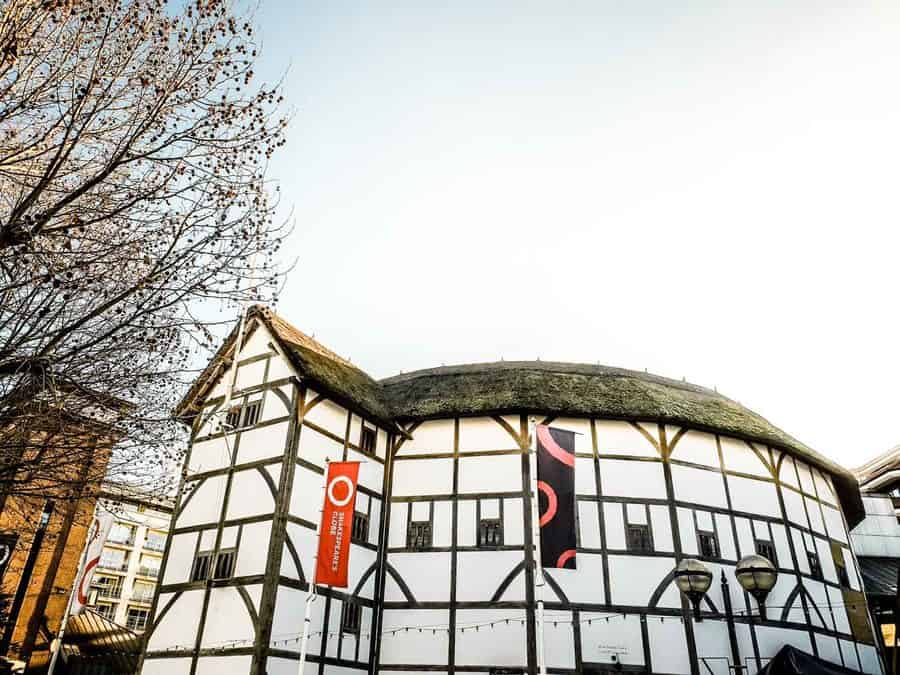
If there’s any historical location to top the Tower of London for the most iconic award on our tour, it’s probably got to be our last stop, Shakespeare’s Globe.
This is a faithful reconstruction of the original theatre that The Bad would have had his plays performed. It’s only slightly off from the original location, the original having burnt down in 1613 after a pyrotechnical mishap set fire to the roof.
This iteration is known as Shakespeare’s Globe and they put on some fantastic performances of Shakespeare’s work. One of our favourite things to do in London is grab a cheap standing ticket and experience the plays just like the common folk would have back in Old Bill’s day (without all the rotten tomato throwing of course).
Read More: 14 Interesting Facts About the Globe Theatre We’ll Bet You Never Knew
Historical London Walking Tour Practical Tips and Map
- Make sure you wear comfortable shoes. You will want them for this as you’re going to be on your feet a lot.
- You’ll be walking past heaps of cafes, pubs and restaurants so feel free to hop off the walk at any point and grab some food. If you make it all the way to Tower Bridge without having eaten, head to Borough Market. It’s very near The Golden Hinde and has so many great options for food.


